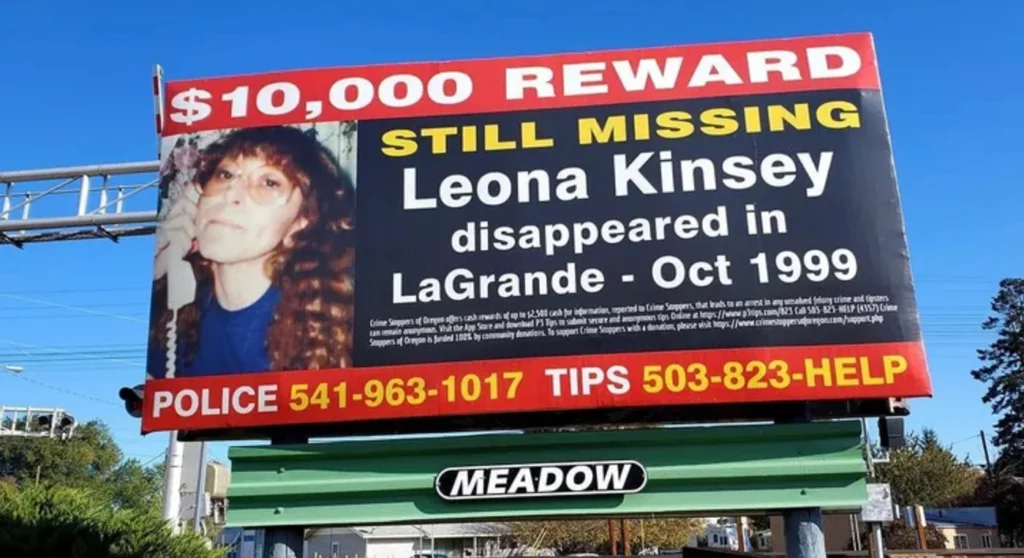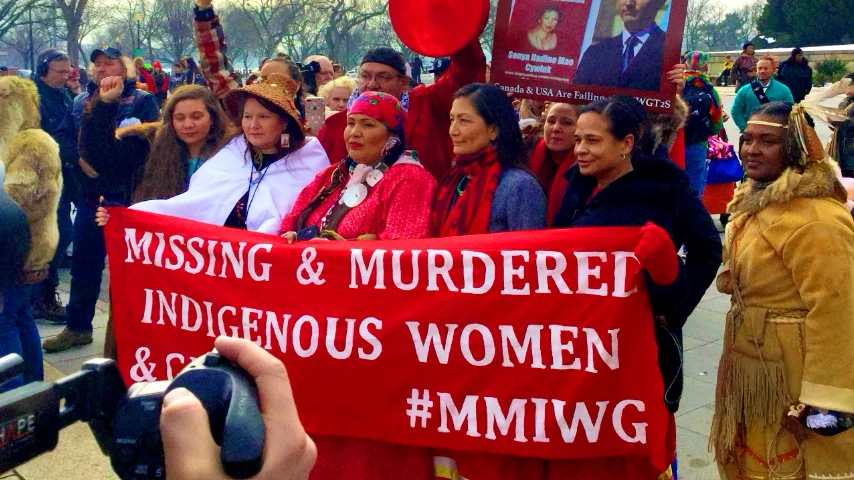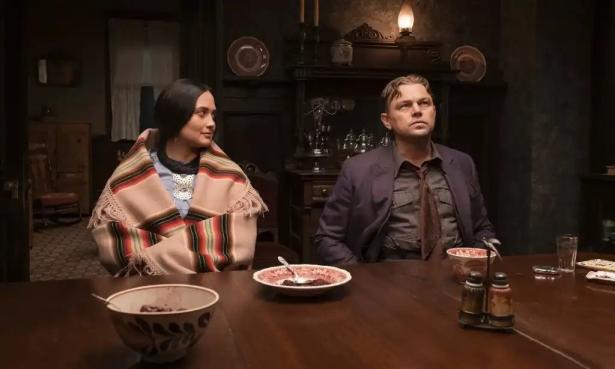‘Killers of the Flower Moon’ Sidesteps the Issue of Missing and Murdered Indigenous Women
Note to readers who have not yet seen the film or read the book: This story includes spoilers.
The $200 million epic film Killers of the Flower Moon, directed by master filmmaker Martin Scorsese begins, after a brief but beautiful prologue, with Leonardo DiCaprio’s character Ernest Burkhart arriving by train in the Oklahoma town of Grey Horse.
The book that inspired the film, however, written by David Grann, begins on the Osage reservation with a young Osage woman named Mollie Burkhart worrying about the disappearance of her sister Anna, whose body is later discovered beside a creek, shot in the head.
The film version puts DiCaprio’s character firmly in the lead, whereas the book was written with Mollie in that role. This shift in perspective has not gone unnoticed, and has reignited controversy over the control of Native narratives.
“As an Osage, I really wanted this to be from the perspective of Mollie and what her family experienced,” Christopher Cote, Osage language consultant for the production, told The Hollywood Reporter at the film’s premiere on Oct. 20.
Anyone familiar with Native issues will immediately recognize the disappearance and murder of Mollie’s sister as a missing and murdered Indigenous woman story. The MMIW movement has grown prominent in recent years. It addresses the ongoing epidemic of Native people—mostly women and girls—who are killed every year by human predators.
One major cause is the split in jurisdiction between federal and tribal court systems. Tribal courts cannot prosecute crimes perpetrated by non-Natives, even if the victims are Native. The federal court system has jurisdiction, but according to some, it gives little priority to crimes against Indigenous women. In a 2020 article for Georgetown Journal of Gender and the Law Online, attorney Rhea Shinde notes the general lack of concern by federal prosecutors to find justice for Indigenous female victims: “Unfortunately but perhaps unsurprisingly, the federal government has proven itself incapable of fulfilling its duty to Indigenous women. Federal prosecutors often decline to prosecute the Indigenous women’s cases of intimate partner violence unless the perpetrator inflicted serious injury.”
Predators benefit from this apparent lack of concern, making Native women prime targets for violence. The Bureau of Indian Affairs estimates 4,200 unsolved cases of missing or murdered Native Americans exist in federal databases. The actual number is thought to be much higher, as many crimes go unreported or are misclassified as suicides, overdoses, or accidents.
Hollywood films often guide public perception of important issues, and while a massive cinematic juggernaut like Killers of the Flower Moon can bring needed attention to issues of ongoing injustice on tribal lands, the film deserves scrutiny for how irresponsibly it treats the Native side of the narrative.
Whose Story Is It?
The story relates an episode in Osage history called the Reign of Terror, in which dozens of Osage people were murdered for their shares in the tribe’s oil trust, which was formed after a sea of oil was discovered under their reservation.
In just two years, beginning in 1921, more than two dozen Osage people were either murdered outright or died under suspicious circumstances. This continued into the 1930s, with an estimated total of 60 suspected murders. All the deaths were linked to gaining ownership of shares in the oil trust.
The book tells the story of Mollie Burkhart, an Osage woman played in the film by Piegan Blackfeet actress Lily Gladstone. The shares Mollie and her family own cannot be sold or traded; they can only be transferred by inheritance. Originally intended to protect the Osage, this legislative mandate wound up having the opposite effect, resulting in scores of murders.
As members of her family die mysteriously around her, Mollie slowly realizes she is next to go, after which point all her family’s wealth will be transferred to her white husband and his family.
Unlike the book, however, the film is told from a white, patriarchal perspective. DiCaprio plays Ernest Burkhart, Mollie’s white husband, an ex-army cook, who slowly gets drawn into a scheme to defraud and murder members of Mollie’s family by his powerful uncle William Hale, played by Robert De Niro.
DiCaprio’s character slowly descends into evil as his uncle, a pillar of the community loved by all, secretly indoctrinates him into the ruthless nature of the white ruling class. It’s a fascinating dynamic, and one that must have appealed to Scorsese, many of whose most famous films, such as Taxi Driver and Raging Bull, depict dark stories with flawed lead characters.
As compelling and beautiful as the film is, it tends to downplay the experience of Mollie, the story’s original protagonist, and gives most of its screen time to its well-paid Hollywood star, DiCaprio. This dilutes its connection to an important current-day problem in Native communities. The story is—and should be represented as—a textbook example of what the Missing and Murdered Indigenous Women movement is fighting against.
The Pain of Disappearance
The very first chapter of the book opens with 34-year-old Mollie worrying about her older sister, Anna Brown, who has not been seen for several days. Author David Grann describes Mollie’s inner feelings about Anna’s disappearance:
“She had often gone on ‘sprees,’ as her family disparagingly called them: dancing and drinking with friends until dawn. But this time one night had passed, and then another and Anna had not shown up on Mollie’s front stoop as she usually did, with her long black hair slightly frayed and her dark eyes shining like glass. When Anna came inside, she liked to slip off her shoes, and Mollie missed the comforting sound of her moving, unhurried, through the house. Instead, there was a silence as still as the plains.”
This silence of loss lingers in the families of missing and murdered Indigenous women. It is unlike loss due to illness, old age, or accident in which the causes are known. Instead, the constant gnawing pain of unexplained and unresolved loss, what’s called ambiguous loss, blocks the process of healing.

A billboard for Carolyn DeFord’s mother, Leona Kinsey, stands in La Grande, Oregon. It was paid for by supporters of the MMIW movement in 2022. Photo courtesy of Carolyn DeFord
This ambiguous loss is all too common today within Native communities all over the country. In Tacoma, Washington, Puyallup tribal member Carolyn DeFord remembers how her mother Leona Kinsey disappeared in 1999. On Oct. 26 of that year, a family friend phoned DeFord from Oregon, extremely worried because Kinsey was not home and was not returning calls.
DeFord knew her mother had recently had some run-ins with drug dealers in the town of La Grande, Oregon, where she lived. Someone even wrote the word “narc” on the front of her trailer. But DeFord refused to think that her mother had been murdered.
“You just always think it’s a miscommunication. That can’t really be it, right?” DeFord says. “She’ll show up. She’ll come home. She just had a flat tire. Something…”
But another day passed, and then another, just like in the book. DeFord admits her mother struggled with addiction, but she fought hard for her recovery and always stayed in close touch with her daughter.
“My mom had her problems and her challenges, but she jumped at every opportunity to be there for me, especially if my kids were sick or if I were in danger or anything like that,” she says. “This wasn’t like her. She would have called me if she were ok.”
The police did little but take statements and file reports. DeFord and her mother’s best friend, Nancy, did their own investigation, eventually even uncovering a suspect that they reported to police. But disappearing is not a crime, and since there was no real evidence of a murder, no further investigation was performed by law enforcement.

Carolyn DeFord, in white, stands with Roxanne White, in red, Congresswoman and future Secretary of the Interior Deb Haaland and others at the 2019 Indigenous Peoples March on Washington. Photo by Frank Hopper
Finding the Medicine of Support
The remains of DeFord’s mother have never been found, and her alleged killer walks free. For years DeFord struggled with depression. Then she began corresponding with people she found on Facebook and MySpace who suffered similar losses. She shared her experience with them and let them know they were not alone. As she did, something special happened.
“The more I would talk to families, the more I realized it helped me,” she recalls. “It started me processing and being able to talk about and go through similar experiences with other people who understood.”
In 2007, DeFord discovered the MMIW movement, which originally began decades ago in Canada in response to Native women disappearing on Canadian highways at the hands of serial killers.
“Our First Nations sisters really paved the way,” DeFord says.
At first made up of many different grassroots groups, the movement soon spread to Native communities in the U.S.
In 2020, the Not Invisible Act was passed by Congress, creating a commission “focused on improving intergovernmental coordination and establishing best practices for state, tribal and federal law enforcement to bolster resources for survivors and victim’s families,” according to the Department of Justice.
The biggest challenge, however, is the continued objectification and exploitation of Native women who are too often seen as a disposable commodity.
The Real Killer: Colonization
Killers of the Flower Moon depicts the Osage Reign of Terror as an isolated episode in Native history, instead of just one example of a systemic and ongoing issue. Additionally, it’s told from the side of the ruling colonizers, and depicts the Osage mainly as victims who do little to help themselves. This is all too common in stories about Indian Country.
However, the film is still a masterpiece by a virtuoso American filmmaker that millions will see. DeFord hopes that despite its flaws, the film will promote awareness and understanding of the complex MMIW issue.
“The root is historical,” DeFord notes. “It goes back to the beginning of colonization when Native people, particularly women, were considered property, like wildlife. To the colonizers, those Native women had no identity beyond their value as objects.
“It happened to the Osage, and it happens today to Native girls being trafficked by pimps,” she says. “Although the film doesn’t bring this out explicitly, the point still shines through. And that in itself is healing.”
===
|
Frank Hopper , Tlingit, is a freelance Native journalist born in Juneau, Alaska, now living in Tacoma, Washington. His work appears in Last Real Indians, The Stranger, and Indian Country Today. His self-titled YouTube channel features videos about Native issues. He can be reached at tigerskin62@gmail.com. His YouTube link is https://youtube.com/c/FrankHopper1
|


Spread the word